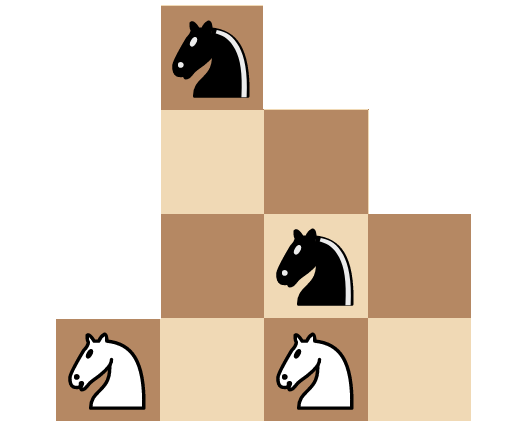The puzzle seems simple enough. It is only a few squares and you only have four knights (the knights move in an “L” shape, like in regular chess). The goal is also straightforward: swap the positions of the black and white knights.
Clarification 1: Every time a knight moves, it must move into an empty square.
Clarification 2: The knight moves do not have to alternate in color.
Attribution: JUNE HUH, COMBINATORICS, AND THE STRANGE ALLURE OF CHESS KNIGHT PROBLEMS


